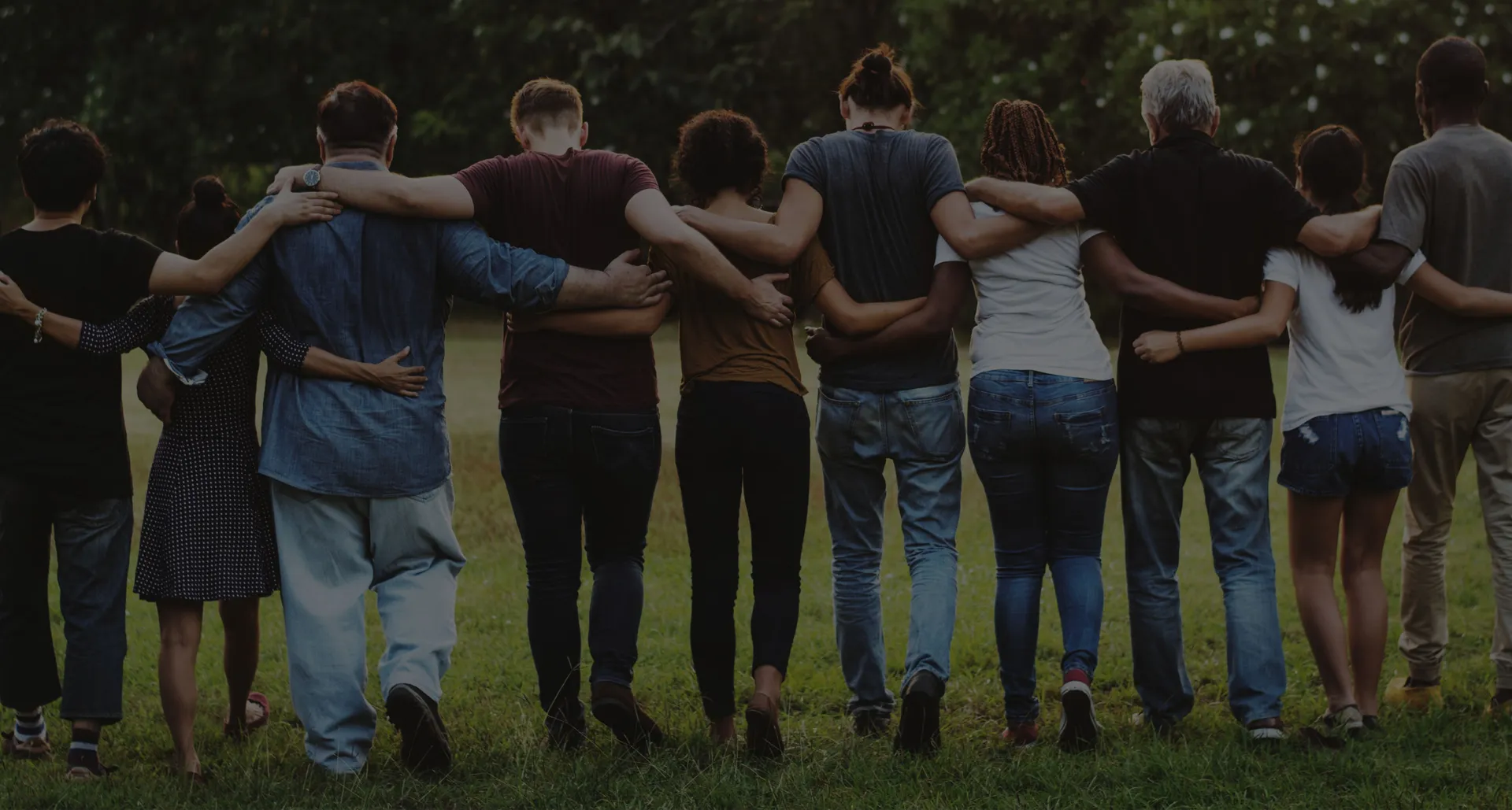





"We don't heal in isolation, but in community." S. Kelley Harrell
In a world where mental health concerns are on the rise, support groups have emerged as a powerful complement to individual therapy. Rooted in shared experiences and collective healing, support groups provide a unique space where individuals can find strength through connection. For many, these groups offer something that even the most effective one-on-one therapy sessions cannot always provide—a sense of belonging and the affirmation that they are not alone.
Research consistently shows that peer support can reduce symptoms of depression, anxiety, and trauma. According to the National Alliance on Mental Illness (NAMI), individuals who participate in peer-led groups report increased hope, improved quality of life, and reduced hospitalization rates. The presence of shared understanding in a group setting can help break down feelings of shame, isolation, and helplessness—barriers that often hinder healing.
In today’s fast-paced, digitally connected but emotionally disconnected world, community-based healing is more important than ever. Rising levels of loneliness and social fragmentation have been linked to poorer mental and physical health outcomes. The U.S. Surgeon General recently named loneliness a public health epidemic, noting its significant impact on overall well-being.
As mental health professionals, the opportunity to cultivate spaces that foster authentic human connection is not only meaningful—it’s necessary.
In this blog, we’ll explore the transformative impact of support groups and highlight real-world insight from Jennifer Payne, Founder and CEO of &Rise, an organization that empowers women and girls who have experienced trauma and abuse. Jennifer’s work exemplifies the profound healing that can take place in safe, community-driven spaces.
Support groups offer more than just conversation—they offer transformation. When people gather in a safe environment to share their stories, listen, and be seen without judgment, healing begins. This process is backed by both clinical observation and scientific research.
Support groups can lead to improvements in mental health by providing emotional validation, promoting coping strategies, and enhancing resilience. Participants often report:
According to a 2021 study published in The Journal of Behavioral Health Services & Research, individuals in trauma-focused peer groups showed greater improvement in PTSD symptoms compared to those receiving individual therapy alone. The shared narrative experience has a significant impact on recovery, especially for trauma survivors.
One of the most damaging effects of trauma, grief, or mental illness is the feeling of isolation. People often believe they are alone in their struggles. In support groups, they discover that others have walked similar paths. This shared understanding:
When participants see others progressing in their healing journey, it inspires hope for their own recovery. This peer modeling effect is especially strong in group settings, where success stories become living proof that change is possible.
The simple yet profound act of being heard—without interruption, judgment, or solutions, can spark deep healing. Group members often express that for the first time, they feel truly listened to and understood. This experience fosters not only emotional release but also the development of meaningful relationships and social support networks that extend beyond the group itself.
As mental health professionals, facilitating these moments of connection can be one of the most rewarding aspects of our work. And as we’ll see through Jennifer Payne’s story, the ripple effects of support groups can go far beyond recovery—they can ignite leadership, resilience, and lasting transformation.
At the heart of powerful support group work lies the commitment to creating safe, validating, and empowering environments. One standout example of this is the work being done by Jennifer Payne, Founder and CEO of &Rise, a nonprofit organization that provides trauma-informed support for women and girls who have survived abuse and trauma.
&Rise offers a variety of support group programs—both online and in-person—that are tailored to the unique needs of survivors. Their programming covers a broad range of traumatic experiences, including:
The goal is not only to address the aftermath of trauma but also to help participants rebuild their lives with strength and confidence. Jennifer explains,
“We create safe spaces for individuals to share their experiences and connect with others who understand their struggles. Our focus is on healing through connection—helping participants overcome isolation, build self-confidence, and understand healthy relationships.”
One of &Rise’s most impactful features is accessibility. All support groups are offered at no cost, ensuring that survivors from all socioeconomic backgrounds can access healing. Beyond emotional support, participants also gain valuable educational resources on boundary-setting, financial well-being, consent, and more—skills that are essential for long-term recovery and independence.
Jennifer has witnessed firsthand the transformative power of community and validation. When asked to share a key insight from her experience running support groups, she reflected on how deeply isolating trauma can be—and how essential it is for survivors to feel understood.
“Many survivors aren’t able to talk about their experiences with friends or family because they’re often met with invalidation or victim-blaming. But when they find a space where others get it, it’s a game changer.”
Among the many success stories Jennifer has seen, one theme continues to inspire her: survivors becoming leaders.
“We’ve had women come to &Rise seeking support—some were deeply wounded, unsure, and just beginning their healing journeys. Over time, they gained strength and clarity, and eventually became support group facilitators, volunteers, or even board members. It’s a beautiful full-circle moment. They came for help, and now they give help. That’s the power of community.”
This cycle of healing and giving back lies at the core of &Rise’s impact. As Jennifer puts it,
“At &Rise, our strength is in building community, being authentic, and providing the crucial support that survivors need to thrive and rise into the ultimate versions of themselves.”
Her work serves as a profound reminder of what’s possible when we cultivate spaces rooted in empathy, connection, and empowerment. For mental health professionals, &Rise offers a valuable model of how peer support and trauma-informed care can work hand in hand to create lasting change.
Running a support group isn't just about guiding conversations—it's about creating a space where people feel seen, heard, and empowered. In this section, we’ll dive into practical tips that help mental health professionals build groups that truly make a difference in people's lives. Let’s explore how you can lead a transformative support group experience!
Before any transformation can take place, participants need to feel physically, emotionally, and psychologically safe. A trauma-informed approach emphasizes understanding trauma’s impact and avoiding re-traumatization. This means:
Training in trauma-informed care is crucial. According to the National Council for Mental Wellbeing, 70% of adults in the U.S. have experienced at least one type of traumatic event. Mental health professionals leading support groups must be equipped to recognize and respond to the complex needs of trauma survivors.
Effective support groups thrive on diverse perspectives and shared humanity. Facilitators should be mindful of cultural, racial, gender, and socioeconomic dynamics within the group. Representation matters—when participants see leaders and peers who share similar lived experiences, they’re more likely to feel understood and open up.
Encourage inclusive practices such as:
Trust is the cornerstone of a successful support group. Set clear expectations early on, including group rules, confidentiality agreements, and participation norms. Consistent scheduling and respectful facilitation help establish a reliable structure that promotes psychological safety.
Confidentiality should be emphasized at every stage. Reinforce the idea that what’s shared in the group stays in the group. This practice not only protects participants but builds a culture of mutual respect.
While structure helps guide sessions and prevent chaos, too much rigidity can hinder emotional expression. Create a loose framework—for example:
Leave space for organic conversation. Some of the most impactful breakthroughs happen when participants feel empowered to guide the dialogue themselves.
Facilitators are guides—not saviors. The goal is not to fix, but to foster empowerment and resilience. Encourage group members to support one another and share insights. This peer dynamic helps reduce feelings of isolation and builds a sense of belonging.
Over time, consider inviting group veterans to co-facilitate or mentor new participants. As Jennifer Payne of &Rise shared, many survivors eventually become leaders—a beautiful indicator that your group is not just supporting healing, but fueling growth and leadership.
Support groups aren’t just for emotional expression—they’re also platforms for learning. Incorporate topics such as:
Handouts, journaling prompts, or guest speakers can enrich these discussions. Providing tangible tools empowers participants to apply what they’ve learned beyond the group setting.
Regularly check in with participants to assess the group’s effectiveness. Anonymous feedback forms or open feedback sessions can provide honest insight into what’s working and what needs adjustment.
Stay flexible—your group may need to shift in tone, structure, or format over time. Growth often comes from adaptation.
Starting and leading a support group is a powerful way for mental health professionals to expand their impact beyond one-on-one sessions. However, doing it well requires thoughtful planning, structure, and a deep understanding of your group’s unique needs. Here’s how to get started:
Begin by identifying who your support group is for. Will you be supporting:
The more specific your target population, the more tailored and effective your group can be. Consider your own expertise and what gaps in support exist within your community.
A well-structured group creates consistency and psychological safety. Ask yourself:
Each format has its pros and cons—choose the one that aligns with your population’s needs.

From the very first meeting, set expectations around:
Clearly outline the purpose of the group—whether it’s emotional support, skill-building, or community connection. Well-defined goals help participants know what to expect and stay engaged.
Make your group a space where everyone feels welcome. That includes:
Inclusivity isn’t just ethical—it’s essential to building trust and relevance in diverse communities.
Support groups often include individuals who have experienced trauma. A trauma-informed approach helps prevent re-traumatization and supports emotional regulation.
Key principles include:
Facilitators should be trained in trauma-sensitive care and always prepared to refer participants for additional support when needed.
Creating a truly healing space takes more than good intentions. Here are actionable tips for running effective, compassionate support groups:
When running a support group, it’s vital to track the progress and growth of both the participants and the group as a whole. This allows you to assess whether the group is meeting its goals, and it also helps ensure that it continues to foster meaningful change for those involved.
Effective feedback is one of the most powerful ways to gauge a group’s success. You can use tools like surveys, questionnaires, or informal check-ins to gather participants' thoughts. Key questions could revolve around:
Collecting feedback regularly allows you to make adjustments and create a more effective, supportive environment over time.
One of the most rewarding outcomes of a successful support group is seeing participants grow into leadership roles themselves. Like Jennifer’s experience with &Rise, individuals who start out seeking help often find empowerment and a sense of purpose in supporting others. Watch for signs of this transformation:
These developments not only indicate the success of the group in terms of healing but also reflect the profound personal growth and empowerment that comes from community support.
Anonymous testimonials are a great way to measure the personal impact of the group without putting pressure on participants to publicly share their experiences. This can be done through feedback forms or an informal online survey, allowing participants to describe their emotional journey and growth. You can also incorporate insights shared during group sessions—whether it’s a breakthrough moment or an instance where a participant helped another.
Jennifer’s story, shared earlier, is a powerful example of how individuals go from receiving support to offering it to others, creating a ripple effect within the community.
Finally, take a step back and reflect on the broader transformations happening in your group. What changed for your clients? Has there been a visible reduction in isolation or substance abuse? Have they developed better coping strategies for stress, anxiety? Are they more connected to their communities, nonprofit organizations, or healthier in their relationships with caregivers and family? Documenting and reflecting on these changes, whether through written notes, participant stories, or group discussions, will provide invaluable insight into the effectiveness of your support group. This will help you refine your approach, replicate success, and ensure that your group continues to create real, lasting change in areas like health care, therapy, and peer support.
Jennifer’s story at &Rise exemplifies how support groups can do much more than offer immediate help—they can help transform survivors into leaders who then go on to empower others. The ripple effect of support, healing, and empowerment is powerful.
1. Every Therapist or Coach Has the Power to Create Safe Circles Like This
As a mental health professional, you already possess the skills to create safe, compassionate spaces for healing. You understand the importance of active listening, empathy, and validation. The key is applying these skills in a group setting where individuals can find solidarity, growth, and purpose in a community environment.
Whether you’re working with trauma survivors, those navigating grief, or people battling addiction, a support group can be a powerful tool in facilitating transformation.
2. Start Small—One Group Can Change Lives
It might feel daunting at first, but remember—starting small is often the best way to go. Begin by offering a single, well-structured support group, and as you see the positive outcomes, you can expand. Each individual you help has the potential to touch many others, creating a ripple effect of healing and transformation in the community.
If you’re inspired by the possibilities of running a support group, take the next step by exploring resources available on platforms like MentalHappy. This space can help you learn, collaborate, and connect with others interested in creating these safe, supportive environments for therapy, peer support, and advocacy.
The power to facilitate healing, growth, and empowerment is within your hands. Start small, think big, and watch the ripple effect spread. By fostering supportive communities, you can help guide your clients toward not only recovery from grief, substance abuse but also resilience and leadership in health care and nonprofit organization settings.
If you are in a life-threatening situation - DO NOT use this platform.
Use these resources to get immediate help.

